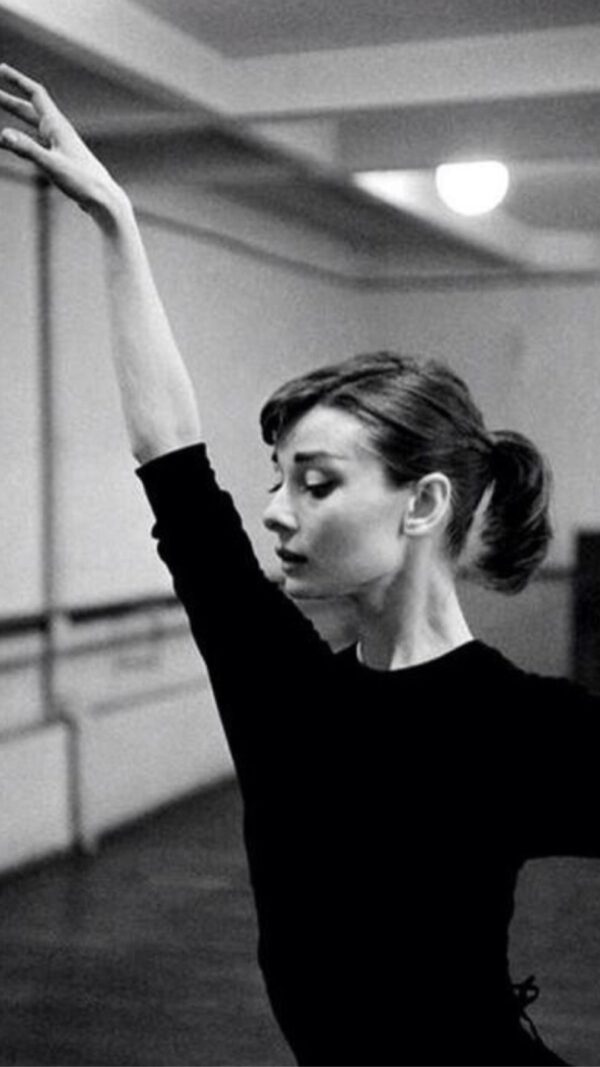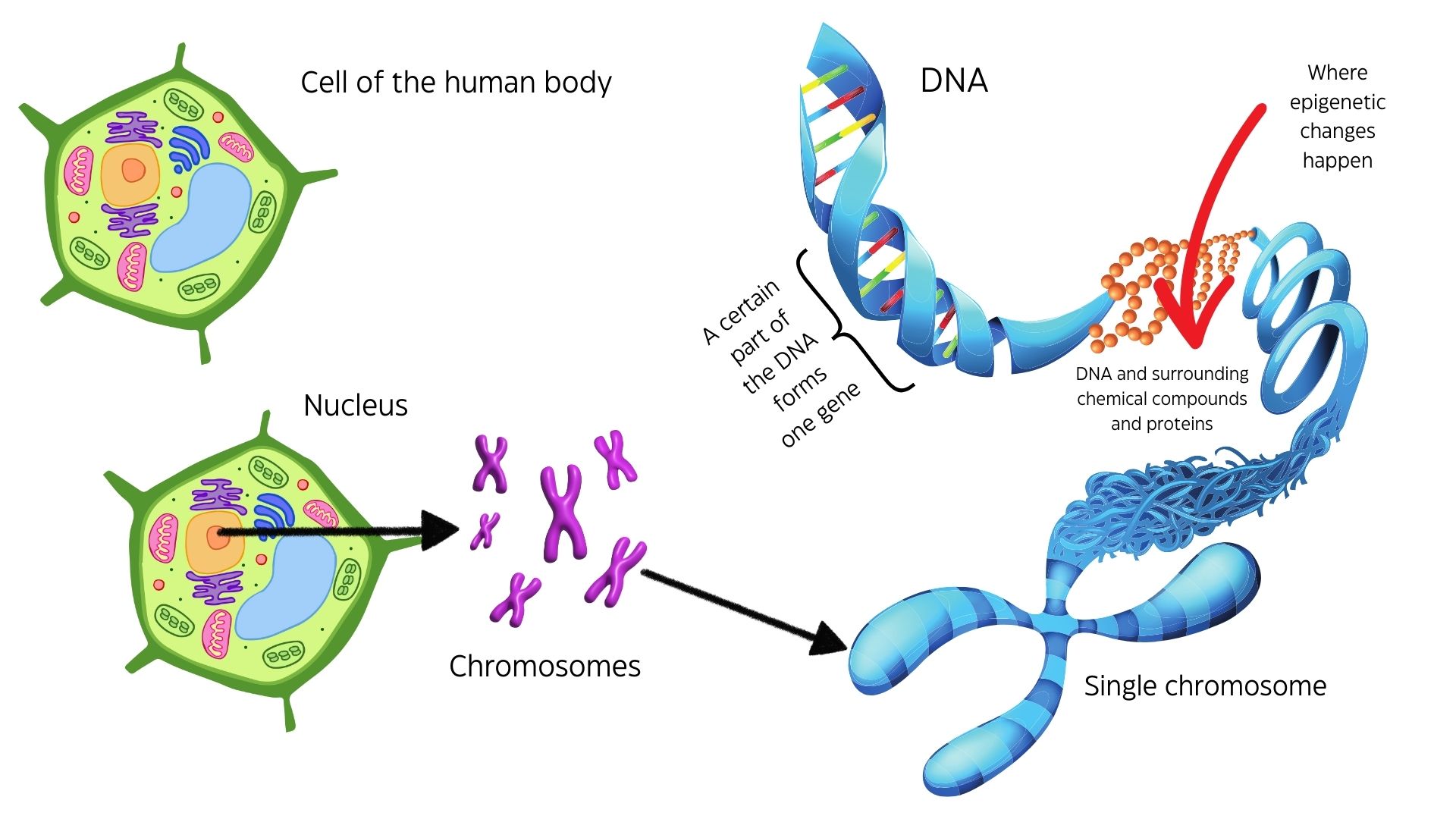THE CONSEQUENCES OF RESTRICTIVE DIETING ON OUR GENES
… and what you may have in common with Audrey Hepburn

You may find it very obvious that I bring up Audrey Hepburn in a blog post – after all, she used to be the (dancing) sweetheart of many movies of the last century. And she’s been envied for her physique by women around the world – but that’s only half of the story; and not the reason I bring her up here today.
When Audrey Hepburn was 16, she had to endure – and ultimately survive – the winter that was later called ’Dutch Hunger Winter’. The events of WWII and the German occupation of The Netherlands would see huge parts of the population being cut off from food supplies during the winter 1944/5, and without flour supply by Sweden, and airlifts of food, the so-called mercy flights by the UK, USA, and Canada, even more people would have died (estimates are that 4.5 million people had been affected, and of those between eighteen to 22,000 died).
Alright – I hear you: ‘What’s that to do with dance?’ A lot. Sadly.
Most of you reading this will probably sit comfortably in their home, being able to access food almost 24/7. But many will have engaged, or are currently engaging in restrictive food intake. And you may have heard many healthcare professionals talk about ’adults should be eating more than the energy requirements of a 4-year-old toddler’ (which many popular diets are based on – though those behind the diets wouldn’t tell you, of course). However, through research in dance, we know today that many, many dancers (too many!) are in a sort of semi-starvation, as they expend more energy than they take in, on a daily basis, and often over many years. I am using the word semi-starvation, as semi-starvation can ensure survival in contrast to starvation, yet may come with a multitude of health consequences. Common sense would tell us that undernourished bodies should just ‘stop’ at some point then, no longer being able to dance, right? That’s not how humans have evolved, and that’s exactly why it appears that dancers can restrict and restrict and still be excellent. Suffice to say, none of these dancers is as great or as excellent as if they were sufficiently nourished – that’s material for another blog post; but quintessentially: Movement is the last thing the body would shut down, because being able to move would make it most probably possible to find a place where food is available, i.e. ensuring survival.
Back to the Dutch Hunger Winter and Audrey Hepburn: During the winter 1944/45, huge parts of the Dutch population had to survive on diets that were initially just above 1,000 calories. However, it’s not an unusual scenario to eat so little for the dancers that I – and many of my colleagues – work with. When dancers start to engage in restrictive dieting, almost never is a sports dietitian or sports nutritionist consulted, meaning they do it all alone with what they’ve heard from teachers, peers, or what they saw on social media. Just this past week I was sent a profile where a teenage girl offers free meal plans for those wanting to consume 1,500 kcal or less (Thank you to the attentive follower who made me aware of this enormously problematic account!).
So, the often untold story about Audrey Hepburn is that she not only experienced this extreme winter, but also that this winter and the malnourishment associated with it, affected her genes in a way that she would suffer from ill-health for the rest of her life.
Oh, alright …. can you tell which way the wind is blowing?
It’s not a prerequisite to find yourself in the middle of a war for that to happen; one restrictive diet can be enough to impact your health for the rest of your life. Or take years off your life.
Not eating enough to cover for both, daily living and (dance) training, not only affects multiple systems in our body; it also affects our genes. And not in a good way. I know, you’ve read about the studies that fasting slows down ageing…… But can I have your attention for a second? These studies were not done in healthy active individuals (many still needing to go through, or finalizing puberty). And that’s where I’d really like the penny to drop. Life is nuanced. Science is nuanced. During some periods in life humans are more susceptible to damage than during others; one of them being puberty. And history could teach us so much – if only more people listened.
Audrey Hepburn was sixteen during that winter, meaning she was just going through that sensible time-window that is puberty. Changes in the environment during puberty (and both famine as well as restrictive diets are exactly that, a change in environment) can influence our genes in ways that are no longer reversible, even if the environment changes back again. That’s when a change in environment has real biological consequences, long after the change itself has vanished into distant memory.
But hold on! What? Our genes are changing by restricting food intake? No. It’s not as easy as that – but also not much more difficult than that 😉
When we talk about genes, we normally mean the entirety of our genes, aka genome, or we talk about certain chromosomes (a package with a certain number of our genes), or our DNA, the famous double helix. However, no matter which one you choose to look at, no single strand of DNA, no single chromosome will just lie around ’naked’ in any of our cells. Humans typically have 23 pairs of chromosome, or 46 chromosomes in total. So, I said they don’t lie around ’naked’ in our cells – our DNA often has small chemical groups added to specific regions as well as being smothered in proteins. And both these proteins and the chemical groups are what reacts to changes in environment. These changes then are reflected in chemical reactions, and this in turn has an influence on our genes. Medicine, biology, physiology and many other natural sciences then speak of ’genes being switched on or off’, implying that not the gene itself was altered, but the surrounding structures (or call it the environment – makes total sense then suddenly, right?). The correct term for anything happening around a gene (or many genes) is epigenetics – ‘epi’ being derived from Greek and meaning at, on, to, upon, over, or beside.
(I’d like to add here that there’s no upper or lower limit that will or will not switch on or off a gene. You can’t control that via your food intake. Some will be affected by restrictive diets much earlier than others, but there’s no way to predict how it will affect you. The only way to make sure you’re in the healthiest state possible is to eat enough to cover for both dancing and daily being.)

What does it mean for you when a gene is switched on or off? Genes obviously ’make us’, they are responsible for producing the chemical compounds that run everything in our body. And I suppose, you’d like everything as smoothy and as healthy as possible? Quite some epigenetic changes are reversible – that’s the good news. But caveat: Not so many are reversible if they happen during pregnancy, early childhood or PUBERTY.
Puberty is exactly the time window that made it impossible for Audrey Hepburn to recover from the health-issues that the (semi)starvation had inflicted on her.
And puberty remains the time window when most young dance students are first told to ’watch their weight’, ’tone up’ – or are point-blank told to restrict their food intake. Add in the dance world’s obsession with weight (for no scientifically sound reason) and the prepubescent body, society’s obsession with the female beauty ideal, and the relentless environment of dance (which in itself can act as additional stressor that can cause epigenetic changes). Furthermore, we know that restrictive eating, disordered eating as well as eating disorders have a much higher prevalence in dance than they have in the general population (where numbers have been skyrocketing since the pandemic – now, do the maths …!). Puberty is the time of vocational/pre-professional training. The time when negative changes to health (be that mentally, physically, or both) can be imprinted on someone in their pursuit to fit in, esp. into ’ballet ideals’.
…
If you’re lost for words, I am with you. Some days, I find it incredibly hard to stay positive, seeing (and listening to) every single week how (semi)starvation is still being promoted in elite (and non-elite) dance schools around the wold. Where those responsible for our kids ask of them to compromise their health long-term. For the sake of the art form?
Literature selection
Tiffany C (2018). The Impact of Nutrition and Environmental Epigenetics on Human Health and Disease. Int J Mol Sci. 19(11):3425
Moosavi A, Motevalizadeh Ardekani A (2026). Role of Epigenetics in Biology and Human Diseases. Iran Biomed J. 20(5):246-258
Ramirez D, Haas SA (2022). Windows of Vulnerability: Consequences of Exposure Timing during the Dutch Hunger Winter. Popul Dev Rev. 48(4):959-989
Wasserfurth P, Palmowski J, Hahn A, Krüger K (2020). Reasons for and Consequences of Low Energy Availability in Female and Male Athletes: Social Environment, Adaptations, and Prevention. Sports Med Open. 6:44
Arcelus J, Witcomb GL, Mitchell A (2014). Prevalence of eating disorders amongst dancers: a systematic review and meta-analysis. Eur Eat Disord Rev. 22(2):92-101